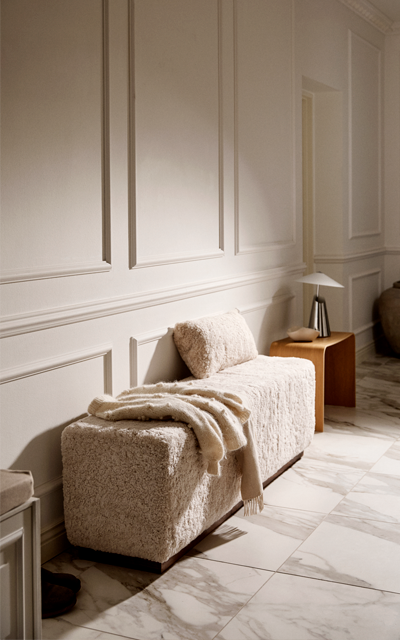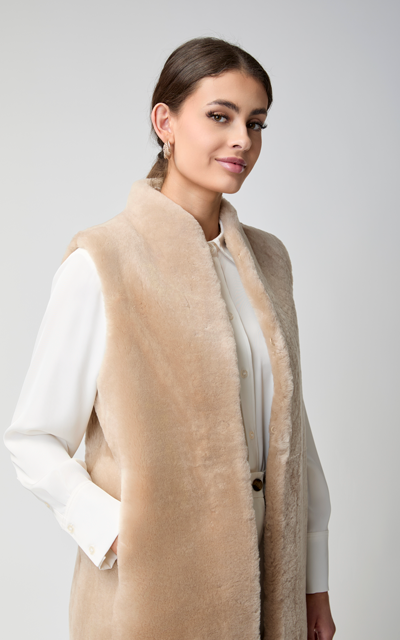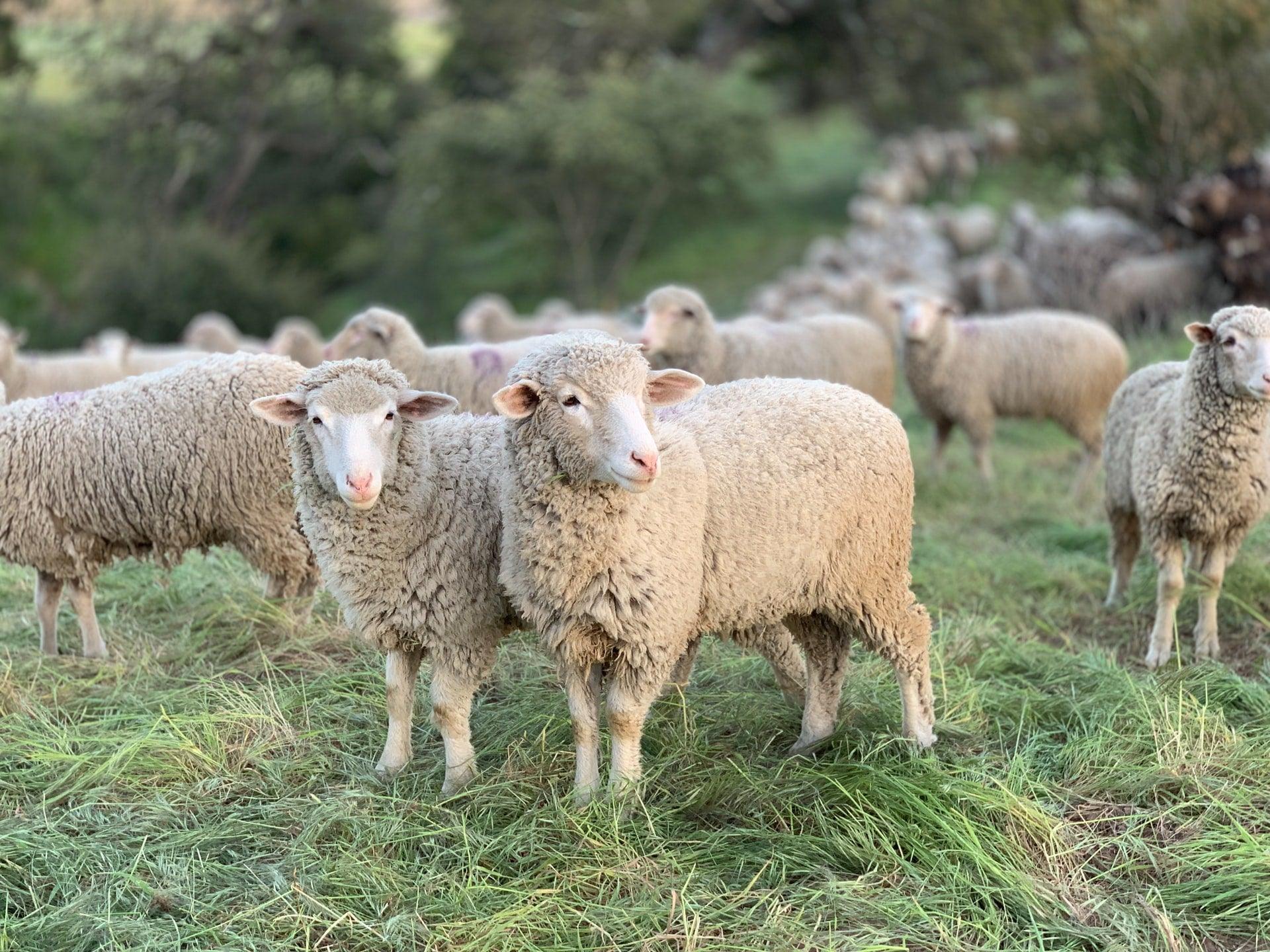
How is fur sustainable?
Today we have found many different ways in which we can preserve the things we get from nature and prolong their value. Fur is a great example of this, as it is a natural product that with very little human help can become a product that can be used for several generations.

The fur industry is a circular industry with natural and green properties, as the actual treatment and dyeing of the skins is a dedicated process that constantly seeks to preserve and take care of the environment. Sustainability is generally an important issue in the fur industry.
In our industry, we are constantly trying to improve our production in terms of sustainability. We do this quite well, and in practical terms we make sure to improve the sustainability in the production of fur through the 3 focus areas:
The product: raw materials and products
The origin and content of the materials are closely monitored to comply with international standards. The quality is ensured by the materials being examined and assessed at all times so that any errors and defects are taken into account. Doing this, there is a guarantee that our products are of high quality, sustainable and aimed at the global consumer based on its demand.
To achieve full biodegradability in our furs, they are dyed in a very special way with several specially made chemicals, all of which are bio-based and in this way we make sure to reduce any damage that production may have to the environment.
Supply chain: Premium supply system
In the second part of sustainable production, it is ensured that all links in the supply chain live up to the premium standard. This is done by collaborating only with the best suppliers and by regularly exchanging experiences with our suppliers, so that together we can continue to develop and become even better. In addition, it is ensured that the various suppliers always live up to the sustainable development policy and the high standards. The use of environmentally friendly and degradable chemicals aims in the long run to achieve a final product that is completely free of chemicals.
Operation: Internal operation and eco-focused plant design
Responsibility creates a high quality standard. The goal is to review each step in the production and each process individually to achieve the highest standard in sustainability. A review of production for improvement is crucial in order to reduce wastewater and the use of harsh chemicals and to be able to handle waste materials in the best way. Energy saving and wastewater management have been considered in the establishment of the plant and in every detail around it. The eco-focused plant design uses many natural lighting systems and thermal insulation materials to minimize energy consumption and to maximize recycling of materials, to meet our objectives of product-related environmental safety.
To ensure that the design lives up to our vision of a more sustainable and environmentally friendly production, the ECO TAN method is used in the tanning, dyeing and drying of the fur.
ECO TAN achieves the following objectives:
1.Reduction in the use of chemicals in the production process results in less chemical surplus with each product.
2.ECO TAN reduces the total amount of wastewater with chromium by 70%. The concentrated amount of chromium in the wastewater is reduced by 75% when compared to the traditional processes.
3.Automation and upgraded equipment also have a positive impact on energy consumption and on reducing water consumption.
4. 50% of the wastewater can be recycled in production.
When the skins are dried, it is done with the method ‘Eco-dye’ which is a circular recycling process. The wastewater from the tanks has a utilization rate of 100% so that there is no waste. The water is recycled while the skins dry and become amazing products that are ready for sale.
Environmental management
The skins we sell come from the largest wastewater treatment system in the global fur industry, which undergoes several inspections, to ensure that production always runs without problems and unnecessary waste. Over $ 100 million has been invested in this wastewater treatment system, which covers an area of 166,000 square meters and a daily capacity of 40,000 tons.
The future
If you buy a fur from NATURES Collection, you are helping to support future research in the fur industry, so that we can continue to optimize sustainable production and minimize all unnecessary waste. In relation to production, the processes themselves are optimized, automated production, energy saving and reduced emissions, cleaner production and low CO2 emissions. In terms of the environmental aspect, recycling of wastewater, toxins are reduced, waste is reduced, efficient use of renewable energy and much more are included. In the future, we hope to be able to make the fur industry a loud voice for sustainable development.
Certificates
The above initiatives are supported by the following environmentally focused certificates obtained by the production:
Tanning and dyeing
We love fur and all the good qualities it brings. In particular, we absolutely love the naturalness and sustainable properties our furs contain. The furs we sell are leftovers from the meat industry.

This means that in the production of meat all over the world, of course, there are a lot of skins that are disposable. Of course, these skins should not be thrown away. In any case, we must not spend resources on destroying them. Instead, we think it is much better, both for us and nature, to buy these remnants from production and treat the skins so that they can be used for something else.
But how do you treat the skins after they come directly from the meat production?
Once the skins are selected from the remains of the various meat productions around the world, they are sent to China, where they go through a process called Tanning.
In China, all kinds of fur are tanned under very strict control. China is a pioneer in the production and processing of fur and they do not compromise on the process when it comes to the quality of tanning, the use of chemicals, working conditions and environmental impact. Fur tanned in China is thus guaranteed to be a product that you can enjoy at home with a clear conscience.
In addition to the fact that our furs are tanned in China, we carry out tests of every fur we get home in relation to the EU rules on chemical content, and we can always conclude that the furs are far below the EU limit values, as all tests show 'Non Detected '- meaning that there are no chemicals on the fur. In this test, hundreds of different chemicals are tested.
When a fur is tanned, it means removing all the residue from the skin so that the skin side is completely clean and then treating the skin so that it becomes the soft and beautiful fur we all know.
We will now take you through the process behind tanning a sheepskin, so you get an insight into how your fur is treated before it lands in your hands:
- Before the sheepskin arrives in China, where they are to be tanned, they are soaked in salt (Sodium Chloride - the same as what you sprinkle on your boiled egg on Saturday morning) which decomposes the biological organisms that sit on the skin so that it does not rots.
- After the trip to China, the sheepskins are often completely dry due to the salts and the hot climate. The skins are therefore placed in warm soapy water. This soapy water is free of chemicals, and just soapy water just like what we use in our bathtubs at home.
- Once the skins have been in the soapy water, we pick them up one by one and inspect the skins for holes, defects or other.
- Once we have found all the best skins, remove the last remnants of meat that could be on the skins. This is done in a machine where the lambskin is sent around a cylinder that runs the skin around so that the knife can gently scrape the skin side so that it becomes soft and flexible.
- After the sheepskin has been washed in cold water, it is time for another round of mechanical removal of meat residues. This is done solely to make sure that no residue remains, so that the skin side is completely clean.
- When the skins need to be dyed, we start by putting them in what is called formic acid (a preservative) and then treat them in Aluminum. The most important tanning agent for sheepskin is aluminum. In relation to dyeing, the aluminum is used to bind the dye to the wool fibers.
The colors we use here are quite ordinary wool dye products, which you can also buy for home use, if you want to dye a wool sweater, for example. These color products are called the following; Sella wool Blue E, Sella wool Black E, Sella wool Red E and Sella wool Yellow E. After dyeing, there are no chemicals in the finished product.
- Once the skin has been dyed, it is thrown in a dryer where it is centrifuged to remove any excess water.
- After the trip in the dryer, we hang the skins for drying in a room with light, warm air.
- The skins are also tumbled in a barrel, to make the sheepskin soft and glossy.
- When the skins are dry and soft, we pull the sheepskin and make it even more flexible and soft.
- Then we run the sheepskin through a machine around a hot metal cylinder, which evokes the ultimate softness in the fur.
- The final step in the tanning process is to cut the lambskins to fit into some specific dimensions they may need.
Tanning a sheepskin is a long process and it is therefore important that it is done with great care for the environment. That is why we have made sure that the sheepskins you buy at NATURES Collection are tanned in China.
The ingredients used in the tanning process are mainly salt and soap, which are not harmful to either the environment or humans. In fact, these remedies are identical to the remedies you use in your daily life!
Do you have more questions?
We hope you are feeling well informed about our furs and their journey and maybe you have learned something new by reading this article?
If this is not the case and you have further questions about the process, you are always welcome to write an email to us at hello@naturescollection.com or visit us in our store and showroom and we will do what we can to answer your questions.






Leave a comment
This site is protected by hCaptcha and the hCaptcha Privacy Policy and Terms of Service apply.